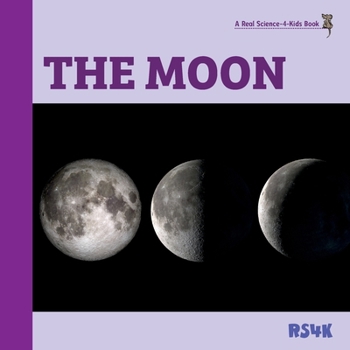The Moon
The Moon is spherical and much smaller than Earth. It is made of rocks and minerals, like Earth. Although it has very little air and no liquid water, it does have some ice. The Moon doesn't make its own light but rather reflects light from the Sun. The Moon orbits Earth, completing one orbit about every month, and it looks different from day to day as it moves in its orbit around the Sun. It can look completely round, half-round, or crescent shaped. The light and dark areas that can be seen on the Moon's surface include craters and lava flows from volcanoes. Craters can form around the opening of a volcano or when another object in space hits the Moon. The Moon and Earth both have gravity, which is the force that keeps the Moon in its orbit around Earth, and it's the Moon's gravity that causes ocean tides on Earth.
Pronunciation guide included. 24 pages with colorful photographs and illustrations. Reading Level 1-3, Interest Level 2-5, Word count 288, Lexile measure 530L.





